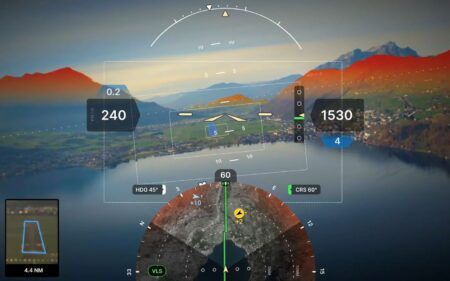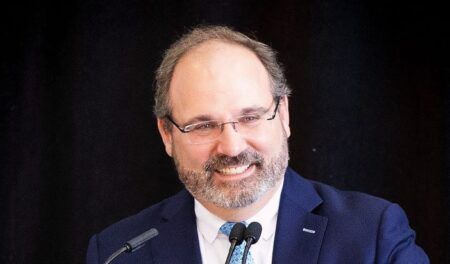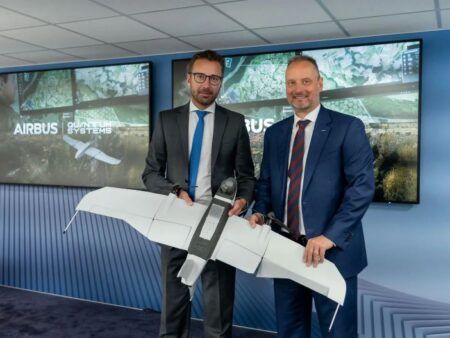Swiss company Daedalean has been developing autonomous systems for aircraft for several years. It has recently made headlines by being bought by Netherlands-based autonomous drone and hypersonic aircraft company Destinus.
Daedalean aims to one day make a completely autonomous aircraft. Before then the plan is to release autonomous safety systems for aviation, with the first expected to reach the market at the end of this year.
I spoke to Sylvain at the Paris Air Show earlier this year about the company’s technology, how it works and its capabilities. We also discuss how the firm plans to ramp up testing and development.
Transcript
Ben Sampson 00:27
Hello. I’m Ben Sampson, editor of aerospace testing International, the world’s leading magazine dedicated to the application of testing, evaluation and inspection in the aerospace industry. I’d like to welcome you to this episode of the testing talk podcast from ATY. The interview today is with Sylvan Alarie, VP of engineering from AI and autonomy company, if you don’t know Daedalean, they’re a really interesting company from Switzerland that has been developing autonomous systems for aircraft for several years now, with the aim of one day developing a fully autonomous piloting system before then, the company plans to release a number of autonomous safety systems for aviation. The first one is expected to reach the market at the end of this year. I spoke to Sylvain at the Paris Air Show about the company’s technology, how it works and its capabilities, and also about how it’s ramping up testing and development. What comes across is that companies such as Daedaleanreally are at the forefront of what’s possible currently, so much so that regulators are having to try really hard to keep up with the innovation. So wherever you are and whatever you’re doing, get comfortable and listen to my interview with Sylvain.
Ben Sampson 01:41
We were just talking about Illumina Vista, yes, and that is that the main product still selling now, or
Sylvan Alarie 01:48
no, it’s one of our products. Then again, we’re just, we’re just starting up now on real product delivery. But Illumina VISTA is a traffic system that we’re certifying on a helicopter, and that will be the first certification of AI on an airport for a critical function. It’s a del C, but it’s still a critical so basically what we do is we provide the traffic advisory to
Ben Sampson 02:13
the white Okay, so display, I like a warning of a hair cloud when it gets too close. Yeah. Basically, like, there’s an equivalent of runways, like a take asset, yeah,
Sylvan Alarie 02:23
yeah, it’s not that complex. Yeah. It’s really a step into it. And of course, since AI is all new, and so we couldn’t throw too much at them, like a fully autonomous AI driven system, you we would have got turnarounds. So it’s really the first use case. So basically, it’s the benefit of the system. The pilot, they have these are they scan the you know, and while they’re flying the helicopters, a fairly especially at low altitude, it’s a fairly stressful, yeah, busy time. So what we can do is we can scan the sky way faster than they can, and we can identify traffic, tell them where it is, and give them a class of what size traffic that is, which gives them an idea of what he is. And so it just helps them see it on the street. They can look out the window and visually confirm it’s there. I mean, they’re still responsible, but it’s a really good aid at spotting things really fast. Just a couple
Ben Sampson 03:21
of questions on that, your flight testing. Now, at the moment, on the helicopter, did you say? Tell me what I entail. So you’ll you’ve got a helicopter up and arrange for another aircraft to come close. Oh, we’ve done
Sylvan Alarie 03:30
that to develop the system. But for certification, it’s going to be more simulation and test based, and then just some flight testing to confirm the human factors and everything. But we do a lot of testing to gather data, because it’s an AI driven system, it’s cameras, so we need a lot of data to be able to then train the model, and what you train the model with, and verify the model, where have to be two separate databases that are independent, which is a demonstration you have to make to the Authorities. And so it requires a lot of data. What we can also do on a training side is use simulation, so we have real images, and we can superimpose real pictures of aircraft in there, create scenarios, different lighting conditions. But in the end, we need to use real data, so we’re constantly flying and testing. So
Ben Sampson 04:18
your system is a camera based system, and that unit, I see the other features there that you’ve got the that happening. There’s it all comes from the same unit of hardware, does it you’re fitting this camera system on? Yep. Can you describe that to me?
Sylvan Alarie 04:29
It’s just basically a pod that mounts on a standard um, aircraft mount. That’s just SPC, so we don’t have to deal with the certification of that thing. And they these things, they have standard interfaces. So people who make cameras or search lights or whatever they made to this. So we designed our pod, our camera pod, to make to that it’s got a forward camera and a downward looking camera. Okay, so the forward we use for traffic, yeah, that’s what we’re certifying. But the other systems we’re testing with some partners, we do. Visual positioning, so that the downward facing camera, a landing site clearance and everything. Everything’s processed on board the aircraft. Everything’s processed on board the aircraft. And our computer. It’s completely self sustained. Okay,
Ben Sampson 05:15
so I know you’ve probably taken me through this step by step. So, so you’ve got your What’s that system called, the hardware that go on any planes retrofit it could, yeah, could,
Sylvan Alarie 05:24
if they have that mount. So we have it now on some Airbus Helicopters for testing. You’re certifying it on the Robinson. It’s a fairly standard interface, but otherwise, we just designed the the installation. Yeah, whatever people want. Okay, some people already have cameras. Business jets have cameras. So they come to us and say, Hey, could you run with our camera for a while? Give us a sample, and we’ll test and see what the gap is and how much effort it is to pixel right? So we’re fairly agnostic.
Ben Sampson 05:53
So off the back of that hardware, you’re developing the flight safety functionalities, really, aren’t they? Features, and you’re starting with the proximity, I guess. What do you call a proximity, airport proximity sensor, traffic detection, traffic detection system. Yeah, okay, so what’s what else is coming? So
Sylvan Alarie 06:10
that’s traffic. We’re now we’re working on obstacle detection. Uh huh. So wire detection is really big to helicopters, electric wise, yeah, they went into a per or the gondola wires or expression switcher, and they run into them all the time. Okay, so it’s a big problem for them. And the systems that have been developed are fairly expensive and don’t cover the whole gamut, so we’re working on that now. We’re detecting towers and radio towers and things like that. We’re also looking at landing sites. So when you have a failure condition in a helicopter, it’s a fairly stressful time. You have to come down. We can tell him where a safe landing spot is, because we can visually. Pilot does that himself, but if we could take that weight off his shoulders, it helps a lot. And we can also determine if the landing site is clear or if it’s been compromised by somebody who’s driving their car there. So the idea
Ben Sampson 06:58
is you’re going to develop those pictures and then roll them out. Roll them out. Yeah, yeah,
Sylvan Alarie 07:03
it’s a little so we have a road map. It’s a little tricky, because we have customers want different things, so they tend to want to interfere with our road map. And you do this first, and that’s how we’re we’re juggling it, but yeah, that’s our idea. Is to just successively roll out creatures.
Ben Sampson 07:17
So where are you going to be certified to use these systems? I mean, they have to obviously part I mean, the regulations exist already for them or
Sylvan Alarie 07:25
This is why it’s so important. This first thing we’re doing, it’s going to be the first time machine learning has been done, yeah. And so Iasa, we work with the ASA. We co authored a lot of documents for them, which are basically similar to the RTCA. Do documents by software and hardware, yeah, but this is for machine learning. Okay, so it’s not a deal document yet. It’s ayasa guidance, yeah, I can see that in five years or something. Somebody this really takes off. Somebody’s gonna make it. RTCA is gonna make a document out of it. So there’s all the guidelines in there that look a lot like 178, and 254, but they’re for learning assurance, a lot of the same steps are there. And with this learning assurance, then that certifies, basically the machine learning card, the AI part, okay. And then that is implemented in hardware and software, yeah. So then we take that, we code it in C plus plus, and so that goes through the normal software process that is hosted on processors and accelerators that follow the hardware process. So this is just to address the model part. It’s a little bit like when they started doing model based software development.
Ben Sampson 08:33
Do you have to show to that you you’re meeting those guidelines?
Sylvan Alarie 08:39
Yes so how we develop the model, how we train the model, how we verify the model on the back side? So that is one process so we know the model is good, yeah, but the model is on our servers and all then we need to take that model and implement it in our hardware and software. So then we have our aerospace people who then run that through the normal development process. So these three legs are what yes are looking for, and we work with the FAA too. We’re doing both at the same time, so we have an audit next week. We have both FAA and the ASA in the room at the same time. Okay? And it was pretty rare,
Ben Sampson 09:12
and you have been at have your first system certified by the end of this year, and that is the traffic detection system. Yes. Can you give me a little bit more detail on what the next steps for the remainder of the year will be June? So there’s like, six months left. I mean, you demonstrate it on an aircraft to reassert as well.
Sylvan Alarie 09:32
So right now we are going through, so there’s four audits, yeah, part of the process we’re going through the fourth audit is basically everything’s good, all right. So the third audit is basically the testing verification audit, okay, so the first one is, do you have all your planning in place? What are you going to do? What is your plan? Yeah, to certify this. And they look at it and they say, that makes sense. That holds water. Go. The second audit is basically. Developing all the requirements and the design they look at that see if you followed your plan. The design was Yeah. Now we have to show, theoretically, about 75% of the verification, yeah, of the software, the hardware and the model, all right, which is the new partner, yeah. And so that’s what we’re doing next week. Once that is done, it goes well. Then we finish everything up. We finish the remaining test, whatever bugs we have, we fix and all that. And then we do the final head nodding. Everything’s good, yeah. And we’re so we think, you know, we’re end of June. We think six months to get to the last step is
Ben Sampson 10:37
so that’s good. The kind of natural question is, do you have a Do you have a first
Speaker 1 10:41
customer? Who is it? So we do have a customer we can’t disclose right now,
Sylvan Alarie 10:46
but it’s, yeah, it’s a military customer as a defense application, yeah. So that’s one of the reasons why we can’t really disclose it, yeah. But on the commercial side, not yet. We have a lot of really interesting people that, because this is so new, yeah, especially, they don’t have a problem with the hardware, the software side, but the machine learning side, they’re all like, when you guys are done, come see us. We really want it, but we’re still a little worried that, you know, we start the process on our side, and then you guys get roadblocked by Assa, and now, you know, so there’s still a little sketchy. So we have really, really good feedback. Everybody wants the various not just traffic, the wires, all the other stuff. Yeah, very good feedback, both on air, airplanes and helicopters. But people are a little bit waiting. So this is why we’re full push on it, because we see this as the yeah and yeah, I mean, a
Ben Sampson 11:43
massive milestone for the and then it’s just going to open up. And once you’ve done it, once with a traffic avoidance, it’ll just be get more efficient that yeah,
Sylvan Alarie 11:52
and all the standard work is done, yeah. So there’s a lot of reuse, and so our costs go down, yeah, a lot. And even on the authorities, because this is so new, we have to walk through a lot of things with them. They didn’t know what they wanted to do. So it was really collaborative. That’s why I said we co authored a lot of the guidance material with them. Second time around, they know, right? And they’re like, Okay, we did that. We don’t want to do that this. Yeah, it’s going to be a lot more streamlined.
Ben Sampson 12:19
Can I Sorry, just a couple of questions, a couple more questions. First was on was on human factors? Yeah. I mean, I mean, how much work are you doing on that? I mean, what, what would it be like an alarm sounding up? I mean, it’s a really, really tough subject, right? Yeah,
Sylvan Alarie 12:34
the Human Factors part is really big. So again, for this first system, because it’s an advisory to the pilots. Yeah, we kept it fairly basic. So we basically tell him what the aircraft is, which way it’s going. And, you know, just, we don’t want to make it too complicated, because then you get into the all the human factors and distractions, indications, alarms and all that, already, we had to do a lot of human factors work to demonstrate the safety benefit of the system. Reply. So are we just distracting the pilot or actually helping him? Yeah. So we have a full cabin, a full Robinson 44 cabin with a wrap around screen and our system installed in it, yeah, and it’s black, curtained out. We’ve bring, brought in a lot of pilots that we contracted from outside that don’t know our system too much. We give them a very basic training on the system, and then we have them fly through various scenarios, and we increase the difficulty factor as we go. And then they give us comments and all that. And so they rate the system. So there’s we have human factor engineers. So they do this per though, yeah, whatever the rules are for human factor people. And so we do that, and then the ASA has to also do that same assessment.
Ben Sampson 13:47
But the benefit, obviously, in safety terms i?
Sylvan Alarie 13:52
we have superhuman performance in the sense that we don’t get tired. We can we scan the sky at six times a second. Noise doesn’t bother us, somebody in the back seat or anything. Why? So we are constantly alert, yeah. And so there is obviously a benefit there. The thing is, Dan, giving that back to the pilots, the human factors that you rightly bring up, that’s where you have to be a little bit more careful and not overwhelming. So we right now what we do is we can all we also so we have our cameras, obviously, but there’s also other sensors on the aircraft, so notably for traffic. So we can take that signal and take ours and match them together and produce a single outfit, yeah, so that what the information they get comes from multiple sources. So we have some fusion algorithms that we do. Same for positioning. We can fuse GPS and the visual together so you get one position, so you can have you could even have incoming aircraft and positional data for stuff that’s beyond visual line of sight at the moment. Yes,
Sylvan Alarie 14:56
yeah, yeah. That comes in through the instruments and satellite base. You take that. And we we mix it with our visual so we know it’s coming, right? And then when we confirm it visually, they actually get a little icon that is not only radio based, but visually confirmed in the day he sees it.
Ben Sampson 15:14
So the term here would be situational awareness, right? Yeah, I wonder the military you’re of interest.
Sylvan Alarie 15:19
And then, yeah, and then we don’t develop avionics. We’re not an avionics and we’re we’re in the field of avionics. We’re not a Honeywell, a talus, a Collins. So what we do is we interface with their displays, right? That’s where you want, yeah, and we work with their human factors, people. So we have done this with Mo Genesis, so not only did we install our system on their flight test aircraft, producing Yeah. We also went further and integrated it within their cockpit display, so they have a specific page that they can turn up, yeah, and they have our system running there, and they can monitor it.
Ben Sampson 15:56
It’s interesting see where you’re placed alongside those guys. So couple more things. How is this similar to what you’re getting a car name? Can you draw parallels to?
Sylvan Alarie 16:05
Oh, it’s very similar. Yeah, it’s better. If you’ve driven around in a Tesla, you’ll see that, like even it shows you stuff on the screen right, and you see, like, bicycles or something, and they’re constantly flashing that’s because it’s dropping it and picking it up there. And we don’t drop we have very high requirements for detection and also what we call repos, so not dropping it through the whole track that is interesting to the systems. It’s coming across their screen. We don’t lose it well. I mean, there’s nothing’s perfect in this world, but we have very high criteria for that much more than they have in automotive. But otherwise, yeah, I’ll digress a little bit. So our positioning system for the landing site and the hovering capability shows them what’s under the aircraft. Like I said, we can see the landing site and if it’s compromised. And so the helicopter guys are like, yep, you know my car. I see my car from the cop view, you know, what’s around it. Could you do that? So we had our guy hack something up, and yes, we can display their helicopter. We can put a circle around the diameter of the rotor. And of course, you have the image. So if there’s a tree and you see your rotor diameter, you can, you know, see where the danger is. So that’s kind of like the parking feature on your desk. So, yeah, a lot of stuff is very similar. I think it’s going that way. Yeah. Is the goal still full of autonomy? Ultimately,
Sylvan Alarie 17:29
yeah, I thought so, yeah. So it’s pulling from all directions. The drones, the evtols, yeah, they need to go beyond visual line of sight, fly with other aircraft. So they need these enhanced features to be certified and to get their allowance to fly the EV calls. Eventually they need to ditch the pilot. I mean, that’s a revenue seat right there that they don’t want to so their most of their roadmaps are autonomy. And then on the existing commercial side, reduced pilot operation is a long term thing. They have a lot of hurdles they need to solve, yeah, but these are things, if they want to do that, we can help them. People talk about having one pilot, and the pilots have complaining and all that, but before you even go there, you have FedEx flying from Memphis to Shanghai with three pilots on board. You could at least get rid of one and have two and have an AI system be the third pilot. I think AI that offers a lot of things, and we’re developing stuff, but people come with ideas as well. You know that they’re like, you know, could you could ai do this? Yeah, thought about that, yeah.
Ben Sampson 18:37
But we could. But the safety stuff, I mean, it’s going to bring money in, right? And he’s also, so there’s revenue there, and he’s also going to build trust in the sisters, right? That’s the that’s the key thing.
Sylvan Alarie 18:48
and that’s why we need to deploy a system that’s not too ambitious right now. Get it out there, get the authorities comfortable with it, and get people flying it and saying, oh, yeah, this is good, you know? I mean, I’m old enough that, when I was in the original fly by wire aircraft, and it was the same thing, they all had mechanical back hunts, and, you know, even the side stick, the Boeing guys, they might have anything to do with side sticks. Yeah, big, still big, uh, columns. And nowadays, nobody gives an aircraft does not completely fly by wire without any mechanical backup. It’s just the way you do it, yeah, okay, um, things have to progress. And so we’re, we’re very eager to do a lot, because we see a lot of potential in our system.
Ben Sampson 19:29
Yeah, I’m impressed, and I feel like the companies are pricing a real breakthrough moment this year with this product.
Sylvan Alarie 19:35
Oh, this year is huge for us.
Ben Sampson 19:42
You I hope you enjoyed my conversation with Sylvan Alarie, VP of Engineering at Daedalean, join us again soon for another episode of the testing talk podcast from ACI. In the meantime, stay in touch with us at aerospace testing international.com, on LinkedIn and via this podcast. That’s it until next time .
20:03





